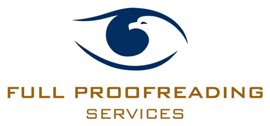KEEP YOUR READERS COMING BACK FOR MORE!
Picture a place that you know like the back of your hand. You know all the street names, the locals, which place makes the best coffee. You know where to find your friends.
Now visualise a complete stranger coming to your familiar place. They have never set foot here before today. How do you think they are feeling? Lost? Bewildered?
Imagine this. You are this stranger’s tour guide, taking them on a journey around this place you hold so dear. What will you show them? What do you think is important for them to know, and which parts can you leave out?
You need to focus on getting this right. If you succeed, the stranger will feel welcome and will quickly learn the key places and people he or she needs to know. From there, they can fill in the missing pieces by exploring your town in their own time.
Get it wrong, and the stranger will leave your special place feeling frustrated and unwelcome. They just never felt at home in this strange place; it remained a mystery to them—and they may never return.
Of course, this fable is intended to help new writers realise how important it is to construct their writing in a way that draws readers in, holds their interest, and keeps them reading to The End.
This sounds simple, but it’s not. Your story plays out clearly in your mind. You can visualise every character and every scene; you know what is going to happen to whom and when; you know the beginning, the middle and The End. In short, it’s like a movie you have seen or a novel you have read dozens of times, playing over and over inside your brain.
The way we read is changing (see August 2014 blog). 21st century readers have little time or patience for convolution, wordiness, sub-plots, or loquacious dialogue.
You are THINKING your story.
It’s not like that for your readers. Apart from reading the synopsis to give them a basic idea of the storyline and the main characters’ names, the readers have no idea how your story is going to develop, or where it is going to go.
They are READING your story.
I often work on novels where the writer has become so immersed in their story, they forget about the reader. Here are some tips to help you tell your story in a way that makes sense to your readers, is consistent, and above all, allows you to be creative with the narrative:
- Planning. Before you start writing, have a clear vision of how your story will be told. It is simplistic to say it will have a beginning, middle and an end. What is important is that your story follows a logical order. Your readers are along for the ride—don’t lose them along the way.
- Research. If you are including any factual elements, check your details are correct and that you know the spellings, dates, colours, places etc. In short, be accurate. If you aren’t, you can be sure someone will pick you up on it (your editor certainly will).
- Keep a ‘character map’. I use a simple Excel spreadsheet and log the name of every character (unless they are superfluous, in which case I sometimes suggest they remain nameless at the risk of bombarding the reader with too many names). As I go, I make notes of important characteristics, events/dates or relationships between characters so I can cross-check for accuracy.
- Have a family member or a friend read the draft in the first instance. Ask them to be honest. Did they ‘get’ the story? Did it make sense? Were there any parts where they felt a bit lost? Be prepared to rewrite where necessary. There are also a myriad of websites and blogs for writers where you can post extracts of your work for feedback and support, or just to glean advice and useful tips.
If you are hiring someone to proofread and/or edit your work before you submit it to a book reviewer, literary agent or publisher, you should ensure the book is in the best shape possible. Conducting your own basic spell and grammar check will save you time and money.
Lastly, if you are a new writer, accept that your manuscript WILL need work—possibly a lot of work. I am often asked to quote on proofreading a novel that clearly needs a thorough structural edit… So how do you tell the difference between editing and proofreading? And how do you know how much editing is needed? This will be the subject of my July blog…
IF YOU HAVE A QUESTION OR TOPIC YOU WOULD LIKE ME TO ADDRESS IN MY MONTHLY BLOG, SEND ME AN EMAIL:fullproof@optusnet.com.au.
